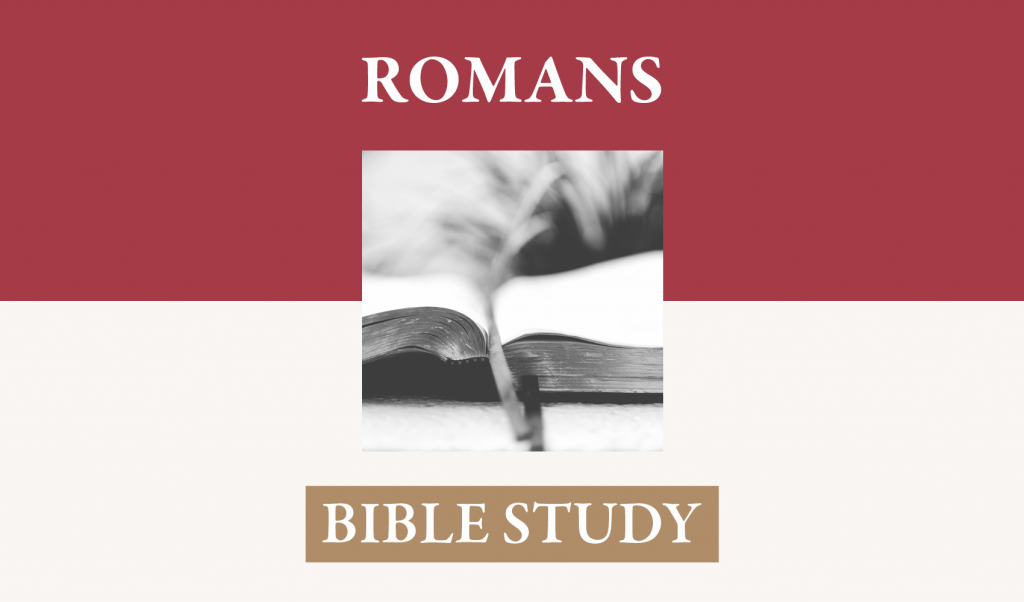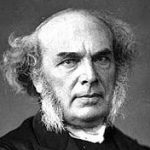The Point: Even at our worse, God loves us.
Christ Died for Us: Romans 5:6-8.
[6] For while we were still weak, at the right time Christ died for the ungodly. [7] For one will scarcely die for a righteous person–though perhaps for a good person one would dare even to die– [8] but God shows his love for us in that while we were still sinners, Christ died for us.
[6-8] Verses 6-8 form a single argument that demonstrates the abundant and absolute nature of God’s love for us. We may summarize Paul’s argument as follows: (1) Human love, at its best, will motivate a person to give his or her life for a truly “good” person [7]. (2) Christ, sent by God, died, not for “righteous” people, or even for “good” people, but for rebellious and underserving people [6]. (3) Therefore: God’s love is far greater in its magnitude and dependability than even the greatest human love [8]. This argument functions not only to provide evidence for the love of God by tracing that love we experience in our hearts to its source but also, in doing so, to substantiate the utter dependability of our hope [5]. Paul accentuates the unity of the argument in verses 6-8 by ending each sentence in the Greek text with the verb die. Paul makes clear the point he especially wants to convey in verse 6 by characterizing the human beings Christ died for as both weak and ungodly. Here weak designates that total incapacity for good which is characteristic of the unredeemed. Paul thereby stresses that God’s love came to us when we were utterly helpless. Paul’s assumptions about the intimate relationship between God and Christ, as well as his concern to highlight the practical, concrete nature of God’s love, surfaces in his argument that Christ’s dying for us demonstrates the love of God. Paul never thinks of God’s love for us apart from the cross, and he never thinks of Christ’s dying for us apart from the Father’s giving of the Son. But what does Paul mean by saying that Christ died at the right time? He may mean that it was the right time in world history for the sending of Christ and the proclamation of the gospel. Or he may be thinking of the time as right because it was the time when, had not Christ died, God’s wrath would have been poured out. The main point of verse 7 is clear enough. Paul accentuates the love of God manifested in the cross of Christ by reminding us that the pinnacle of human life is the giving of one’s life for a person one is close to whereas God sent His Son to die for people who hated Him. While the righteous person would be one who is just and upright in his dealings and would therefore have some claim on our respect, the good person would be one for whom we have a strong personal attachment and for whom, therefore, we would be more willing to die. In contrast to the very best of human love is God’s love; for He shows his love for us in that while we were still sinners, Christ died for us. We notice that Paul finds a basic unity, even identity, between the love of God as it is shown in the objective, factual event of Christ’s death on the cross and as it is experienced in the heart by the believer [5]. An emotional feeling of God’s love, in itself, is little comfort to the person who is lost, condemned, doomed for hell. But a cold, sober historical interpretation that indeed God loved the world on the cross is of little benefit to a person until that love is experienced, is received, by faith in Christ. It is when these are properly experienced as two aspects of one great love, ultimately indivisible, that our assurance that hope does not put us to shame [5] will be strong and unshakable.
Reconciled to God: Romans 5:9-11.
[9] Since, therefore, we have now been justified by his blood, much more shall we be saved by him from the wrath of God. [10] For if while we were enemies we were reconciled to God by the death of his Son, much more, now that we are reconciled, shall we be saved by his life. [11] More than that, we also rejoice in God through our Lord Jesus Christ, through whom we have now received reconciliation. [ESV]
[9-11] So far Paul has concentrated on what God has already done for us through Christ. We have been justified. We have peace with God. We are standing in grace. We rejoice in our hope and in our sufferings. Yet there is more – much more – still to come, which is not yet ours. In fact, verses 9 and 10 are notable examples of the familiar New Testament tension between the ‘already’ and the ‘not yet’, between what Christ has accomplished at His first coming and what remains to be done at His second, between our past and our future salvation. For salvation has a future tense as well as past and present tenses, and the words common to these two verses are the statement that we shall be saved. What, then, is the future salvation which Paul has in mind here? He uses two expressions, the first negative and the second positive. First and negatively, we shall be saved by him from the wrath of God [9]. Of course we have already been rescued from it in the sense that through the cross God has Himself turned it away from us, so that now we have peace with Him and are standing in His grace. But at the end of history there is going to be a day of reckoning which Paul has called the day of wrath when God’s righteous judgment will be revealed [2:5] and His wrath will be poured out on those who have rejected Christ [2:8]. Secondly and positively, we shall be saved by his life [10]. For the Jesus who died for our sins was raised from death and lives, and means His people to experience for themselves the power of His resurrection. We can share His life now, and will share His resurrection on the last day. So the best is yet to come! In our present ‘half-saved’ condition we are eagerly looking forward to our full and final salvation. But how can we be sure of it? It is mainly to answer this question that Paul pens verses 9 and 10. Both are ‘how much more’ arguments. The basic structure of both is identical, namely that ‘if one thing has happened, much more will something else take place’. What, then, has happened to us? The answer is that we have been justified [9] and reconciled [10], both of which are attributed to the cross. On the one hand, we have now been justified by his blood, and on the other, we were reconciled to God by the death of his Son. So the Judge has pronounced us righteous, and the Father has welcomed us home. In addition, it is essential to Paul’s argument that he stresses the costliness of these things. It was by his blood, shed in a sacrificial death on the cross, that we have been justified, and it was when we were enemies that we were reconciled to Him. Here then is the logic. If God has already done the difficult thing, can we not trust Him to do the comparatively simple thing of completing the task? If God has accomplished our justification at the cost of Christ’s blood, much more will He save His justified people from His final wrath. Again, if He reconciled us to Himself when we were His enemies, much more will He finish our salvation now that we are His reconciled children. These are the grounds on which we dare to affirm that we shall be saved. Christian exultation in God begins with the shamefaced recognition that we have no claim on Him at all, continues with wondering worship that while we were still sinners and enemies Christ died for us, and ends with the humble confidence that He will complete the work He has begun. So to exult in God is to rejoice not in our privileges but in His mercies, not in our possession of Him but in His of us. In spite of our knowledge that for Christian people all boasting is excluded [3:27], we nevertheless boast or rejoice in our hope of sharing God’s glory [2], in our tribulations [3] and above all in God Himself [11]. This exulting or rejoicing is through our Lord Jesus Christ, because it is through Him that we have now received reconciliation [11]. It seems clear from this paragraph, then, that the major mark of justified believers is joy, especially joy in God Himself. We should be the most positive people in the world. For the new community of Jesus Christ is characterized not by a self-centered triumphalism but by a God-centered worship.
Grace Abounded: Romans 5:18-21.
[18] Therefore, as one trespass led to condemnation for all men, so one act of righteousness leads to justification and life for all men. [19] For as by the one man’s disobedience the many were made sinners, so by the one man’s obedience the many will be made righteous. [20] Now the law came in to increase the trespass, but where sin increased, grace abounded all the more,
[21] so that, as sin reigned in death, grace also might reign through righteousness leading to eternal life through Jesus Christ our Lord. [ESV]
[18-21] Beginning in verse 18 Paul now summarizes (therefore) his basic argument in this paragraph, finally stating the full comparison between Adam and Christ that he began in verse 12, parenthetically remarked on in verses 13-14, and elaborated on in verses 15-17. After the negative comparisons of verses 15 and 16, and the qualitative contrasts (much more) in verses 15 and 17, Paul returns to the simple comparative structure of verse 12. This comparative structure is the basic building block of verses 18-21, Paul using it three times to state the parallel between Adam and Christ: as … so [18]; for as … so [19]; so that … also [21]. Verse 20, like verses 13-14, breaks into the sequence with a comment about the role of the Mosaic law in the general salvation-historical scheme of Adam and Christ. Paul again expresses himself in verse 18 elliptically, leaving important elements to be supplied by the reader. Probably we should translate something like “as condemnation came to all people through the trespass of one man, so also did the righteousness that leads to life come to all people through the righteous act of one man.” Paul again asserts that Adam’s trespass has been instrumental in leading to the condemnation of all people. But what do we make of the universal language Paul uses in verse 18: condemnation for all men … justification and life for all men? In comparing and contrasting the two groups – those in Adam and those in Christ – Paul’s concern is to maintain parallelism between Adam and Christ. But Paul’s point is not so much that the groups affected by Christ and Adam, respectively, are coextensive, but that Christ affects those who are His just as certainly as Adam does those who are his. When we ask who belongs to, or is “in”, Adam and Christ, respectively, Paul makes his answer clear: every person, without exception, is in Adam; but only those who receive the abundance of grace and the free gift [17] are in Christ. That all does not always mean “every single human being” is clear from many passages, it often being clearly limited in context [e.g., Rom. 8:32; 12:17,18; 14:2; 16:19]. In the present verse, the scope of all men in the two parts of the verse is distinguished in the context, Paul making it clear, both by his silence and by the logic of verses 12-14, that there is no limitation whatsoever on the number of those who are involved in Adam’s sin, while the deliberately worded verse 17, along with the persistent stress on faith as the means of achieving righteousness in 1:16-4:25, makes it equally clear that only certain people derive the benefits from Christ’s act of righteousness. In case we have missed his main point, Paul reiterates it in verse 19, using the same basic structure as in verse 18 but different language. In contrast to the all men of verse 18, Paul denotes those who are affected by the acts of Adam and Christ by the many (as in verse 15). Two other differences are more important, suggesting that verse 19 is not just the repetition of verse 18, but its elaboration. The first difference is that Paul calls Adam’s destiny-determining action an act of disobedience rather than simply a sin [12] or trespass [15,17,18]. In keeping with the careful contrasts that Paul has used throughout the passage, then, Christ’s work is characterized as an act of obedience. Paul’s focus here seems to be on Jesus’ death as the ultimate act of obedience. The second difference is that as Paul chooses different language to characterize the era-initiating acts of Adam and Christ, so he also uses different language to describe the results of their respective acts. Rather than states, or destinies (death/life, condemnation/justification), Paul now describes these results in more personal categories: through Adam, the many were made sinners; through Christ, they will be made righteous. Paul is insisting that people were really made sinners through Adam’s act of disobedience just as they are really made righteous through Christ’s obedience. This “making righteous,” however, must be interpreted in the light of Paul’s typical forensic categories. To be righteous does not mean to be morally upright, but to be judged acquitted, cleared of all charges, in the heavenly judgment. Through Christ’s obedient act, people become really righteous; but righteous itself is a legal, not a moral, term in this context. Since this being made righteous is put in the future tense, Paul may have regard for the final declaration of justification at the judgment. It is more likely, however, in light of verses 17 and 18, that Paul uses the future tense because he has in view the continual, discrete acts of “making righteous” that occur as people believe. In both parts of the verse, then, we are dealing with a real, though forensic situation: people actually become sinners in solidarity with Adam – by God’s decision; people actually become righteous in solidarity with Christ – again, by God’s decision. But there is one important difference, plainly hinted at in the emphasis on grace throughout verses 15-17: while our solidarity with Adam in condemnation is due to our solidarity with him in sinning, our solidarity with Christ in righteousness is not because we have acted righteously in and with Christ. While Romans 6 suggests that we were in some sense in Christ when He “obeyed even unto death,” that obedience is never accounted to us as our own. In other words, while we deserve condemnation – for all have sinned – we are freely given righteousness and life. It is this gratuitous element on the side of Christ’s work that enables Paul to celebrate the much more of our reigning in life [17] and that gives to every believer absolute assurance for the life to come. At this point, in verse 20, Paul feels it necessary to interject a comment about the role of the Mosaic law in salvation history. Many Jews accorded to the law of Moses great theological, even, at times, salvific, importance. So how does the Mosaic law fit in with Paul’s division of humankind into two groups, determined by solidarity with the two divinely appointed representative-corporate figures of Adam and Christ. Paul asserts that the law came in or was introduced into a situation in which sin already holds sway, and has no power fundamentally to alter that situation. Nevertheless, the law came with a purpose. But its purpose, Paul affirms was not to change the situation created by Adam, but to make it worse. The law came in to increase the trespass – not erased, or eased, or neutralized it, as many Jews, and perhaps some Jewish Christians, may have argued. But in what sense has the law increased the trespass? One of God’s purposes in giving the law of Moses to Israel was to intensify the seriousness of sin. The word trespass alludes to the sin of Adam, but considered in its corporate dimension as power. The fact and power of sin introduced into the world by Adam has not been decreased by the law, but given a new dimension as rebellion against the revealed, detailed will of God; sin has become transgression. But this negative purpose in the law is not, of course, God’s final word. The law remains God’s law, a gift given to Israel with an ultimately positive salvation-historical role. In showing sin to be sinful beyond measure [Rom. 7:13], the law reveals the desperate situation of people apart from grace. But, as Paul has emphasized throughout this paragraph, God’s grace is more than sufficient to overcome the increase in the power and seriousness of sin brought by the law. For in that very place where sin increased, grace abounded all the more. Verse 21 gives the purpose (so that) of the super abounding of grace in verse 20 and also brings Paul’s comparison and contrast between Adam and Christ to its climax. He thus returns for one last time to the language of comparison that dominates this discussion and picks up some of the key terms he has used on both sides of the solidarity spheres: the reign of sin and death and the reign of grace through righteousness, leading to life. But Paul relates sin and death differently than he had done earlier; now, he says, sin reigned in death, or in the dominion of death. And in this dominion, sin is in control. But those who receive the free gift of righteousness [17] enjoy a transfer from this domain of death to the domain of righteousness, in which grace reigns and where life is the eventual outcome. Again, we see how Paul can highlight the importance of grace by giving it an active role, and how he pictures righteousness as the gateway to eternal life. And all of this, Paul reminds us in conclusion, is through Jesus Christ our Lord.
Questions for Discussion:
1. Summarize Paul’s argument in 5:6-8. In 5:5-8 Paul emphasizes the importance of both the subjective and objective aspects of God’s love. Why are both necessary in order for a person to have a true experience of God’s love?
2. Explain the New Testament tension between the “already” and the “not yet,” especially as it applies to salvation. How can a believer be certain of their future salvation (focus on Paul’s use of much more in 5:9-10)?
3. John Stott writes: “The major mark of justified believers is joy, especially joy in God Himself. Is your Christian walk characterized by joy in God Himself? Stott adds: “The new community of Jesus Christ is characterized not by a self-centered triumphalism but by a God-centered worship.” Is the worship of your church God-centered?
4. Describe the comparison/contrast Paul makes between Adam and Christ in 5:12-21. What point is Paul making here?
References:
The Epistle to the Romans, Douglas Moo, Eerdmans.
The Epistle to the Romans, Leon Morris, Eerdmans.
Romans, John Stott, Inter Varsity.

















